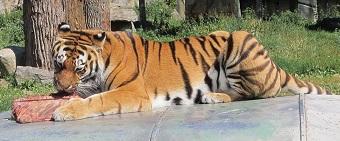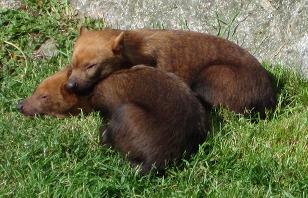Background

There has been much research to evalute the effects that blood has on both carnivore and prey species. For example, carnivores like the tigers that live in areas of dense vegatation, use the odor of blood to track and hunt down wounded prey. However it is less known if a single component in blood odor can elicit the same behavioral responses as the whole mixture of components in mammalian blood.
Recently, several components in mammalian blood has been identified. One of these components is 2-pentylfuran, which has been found to elicit a "blood-like and metallic" odor in humans. This component can be found not only in blood, but also in the meat odor of animals like cattle and fowl. Humans have also shown to be highly sensitive to this odorant, and are able to detect it at a threshold of 27 ppt (parts per trillion).
Aims

The aim for the present study was to:
1. Assess the behavioral responses of two mammalian carnivore species, Amur tigers (Panthera tigris altaica) and bush dogs (Speothos venaticus) to the odor of real blood as well as to the mammalian blood odor component 2-pentylfuran
2. Compare their behavioral responses towards the blood odor component to those of a plant-derived odor and an odorless control
3. Compare the behavioral responses between the two carnivore species
4. Assess the suitability of the odor stimuli as environmental enrichment for captive tigers and bush dogs.
Responsible for this page:
Director of undergraduate studies Biology
Last updated:
05/20/15
